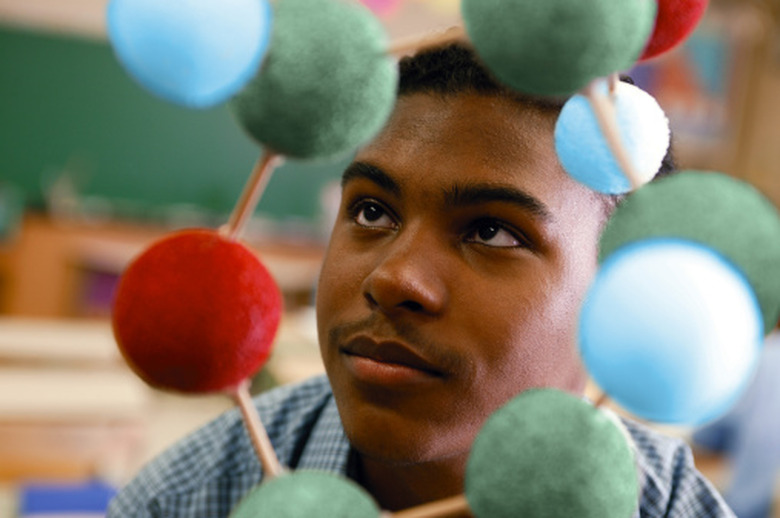How To Make A Three-Dimensional Atom Project
Three-dimensional (3D) atom models are a fun part of the middle and high school science curriculum. As atoms are microscopic in scale, students normally cannot observe firsthand the structure and parts of an atom. A 3D atom project caters to students with visual and tactile learning styles, allowing the student to understand the components of an atom in a meaningful way. The model consists of three particles: protons, neutrons and electrons. These particles have connectors holding them together. Atom models make for a fun learning experience for students, teachers and parents.
Step 1
Select a chemical element to build for your project. More complex elements, such as plutonium, contain a few hundred protons and neutrons. Choose an element with no more than 10 protons and neutrons. Any element on the first two rows of the periodic table of elements will work for your project.
Step 2
Set aside separate Styrofoam balls for protons, neutrons and electrons. Note that the electrons are represented by the smaller, 3/4-inch Styrofoam balls. Choose an individual paint color for each set. Paint the Styrofoam balls and allow them to dry.
Step 3
Draw a plus sign on the protons with the permanent marker. Create the nucleus, or center, of the atom by attaching the protons and neutrons using wooden toothpicks. Break off any excess toothpicks protruding from the nucleus.
Step 4
Draw a minus sign on the electrons. Insert a 6-to-8-inch section of heavy gauge wire into an electron ball. Place the other end of the wire in the nucleus. Repeat until all the electrons are included. Bend the heavy gauge wire to extend the electrons out from the center of the model.
Step 5
Cut a 4-to-6-inch section of heavy gauge wire and insert it into the nucleus. Leave about 1 inch remaining. Rotate the wire around a pen to create a loop of wire. Add a small bead of glue to the hole to secure the wire, if necessary.
Step 6
Tie a 12-inch piece of cotton string through the loop. Hang the model by the string to display the project.
Things Needed
- 15 to 20 Styrofoam balls (1-inch diameter)
- Five to 10 Styrofoam balls (3/4-inch diameter)
- Wooden toothpicks
- Enamel hobby paint
- Black permanent marker
- Heavy gauge wire
- Wire cutters
- Cotton string
- Glue
TL;DR (Too Long; Didn't Read)
Use non-corrosive paint on the Styrofoam balls. Styrofoam is fragile and some spray paints are corrosive and can destroy the Styrofoam. Don't select an element near the bottom of the periodic table of elements. A model from one of these elements will be too big and difficult to complete.
Cite This Article
MLA
Allen, Thomas. "How To Make A Three-Dimensional Atom Project" sciencing.com, https://www.sciencing.com/make-threedimensional-atom-project-8623764/. 24 April 2017.
APA
Allen, Thomas. (2017, April 24). How To Make A Three-Dimensional Atom Project. sciencing.com. Retrieved from https://www.sciencing.com/make-threedimensional-atom-project-8623764/
Chicago
Allen, Thomas. How To Make A Three-Dimensional Atom Project last modified August 30, 2022. https://www.sciencing.com/make-threedimensional-atom-project-8623764/
